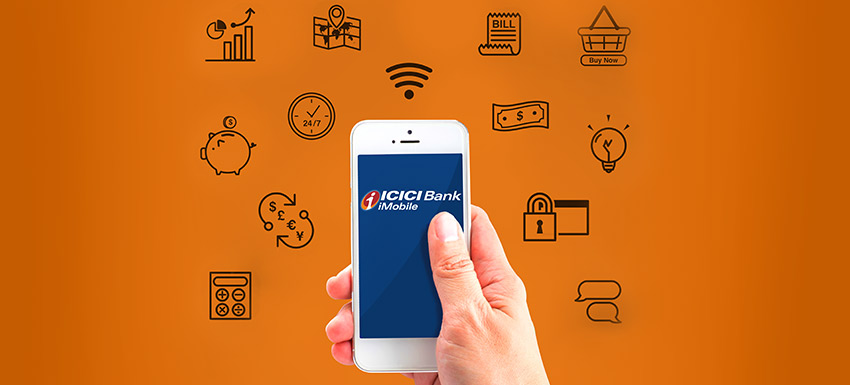THE
ORANGE
HUB
Reasons to use mobile banking

Studies estimate the use of mobile banking in India will touch the 150 million mark by 2020. This is nearly double the number of active mobile banking users today.
Here, we explore the key reasons why banking customers are switching to Mobile Banking apps, like the iMobile app, for everyday transactions.
#1: Highly convenient
Just a few years back, all banking transactions — depositing funds, withdrawals, transferring funds and more — required you to visit your nearest branch. With the introduction of ATMs, a few of these services could be availed of without interacting with some bank personnel. But it still required you to make a trip to the ATM.
With the introduction of Mobile Banking, all your banking transactions can now be done from the comfort of your home or office with a few swipes and taps on your mobile phone. It helps customers stay connected with their bank accounts from anywhere and at any time.
#2: Ease of use
Mobile banking apps offer a seamless experience for customers of all ages. From digital natives to older generations, these apps need to cater to a large variety of audience. Hence, they are incredibly simple and intuitive to use.
Most banks offer handy guides on “how to use mobile banking?” for first-time users. These guides detail all the steps — right from downloading the app to setting up your Login ID and Password, to doing different banking transactions.
Whether you are checking your balance, paying bills or transferring funds — these apps are extremely easy to use.
#3: Enhanced security
Initially, some customers were reluctant to make the switch to Mobile Banking fearing lack of security. However, the reality is that Mobile Banking apps are highly secure. All banking apps are protected with a Password and/or a Personal Identification Number (PIN).
Additionally, Mobile Banking apps offer an added layer of security via One-Time Passwords (OTPs). You receive OTPs on your registered mobile number for performing advanced transactions. This way, your bank ensures that only you can access your bank account, protecting it from hackers and scammers.
#4: Automate regular payments
With a Mobile Banking app, you can schedule regular payments. Utility bills like electricity, cable, water, phone and other bills require you to make payments within the due date to avoid interruption of service.
You can set up instructions to schedule payments automatically on a particular day every month. This way you don’t have to worry about missing payments.
#5: Monitor bank accounts 24 x 7
With Mobile Banking, your bank account is available 24x7. You can check your account balance, pay bills and do other transactions on the go. Since you are able to keep an eye on your account 24x7, you will be alerted about any suspicious or fraudulent activity via notifications immediately.
This helps you report any incident immediately to your bank, thereby increasing the chances of recovering your funds in case of a fraudulent incident.
Mobile Banking — the future of banking
Just a few years ago, customers were asking, “What is the use of Mobile Banking?” Today the situation has completely reversed with more users signing up for Mobile Banking apps than ever before.
Switch to mobile banking and experience a seamless, hassle-free user experience, instant access to bank accounts and a plethora of banking functions and features.
For disclaimer, Click Here.
Scroll to top










